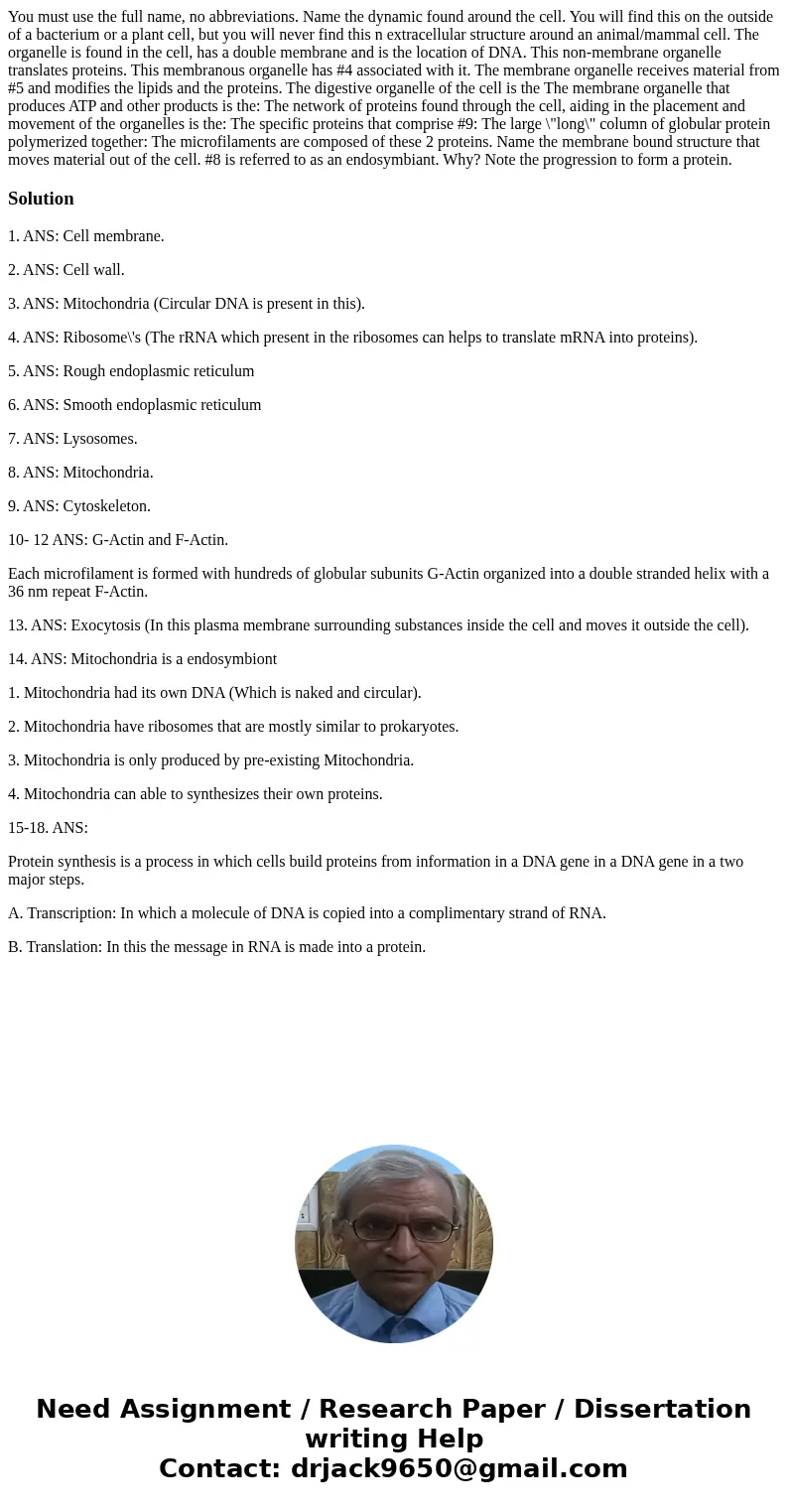You must use the full name no abbreviations Name the dynamic
Solution
1. ANS: Cell membrane.
2. ANS: Cell wall.
3. ANS: Mitochondria (Circular DNA is present in this).
4. ANS: Ribosome\'s (The rRNA which present in the ribosomes can helps to translate mRNA into proteins).
5. ANS: Rough endoplasmic reticulum
6. ANS: Smooth endoplasmic reticulum
7. ANS: Lysosomes.
8. ANS: Mitochondria.
9. ANS: Cytoskeleton.
10- 12 ANS: G-Actin and F-Actin.
Each microfilament is formed with hundreds of globular subunits G-Actin organized into a double stranded helix with a 36 nm repeat F-Actin.
13. ANS: Exocytosis (In this plasma membrane surrounding substances inside the cell and moves it outside the cell).
14. ANS: Mitochondria is a endosymbiont
1. Mitochondria had its own DNA (Which is naked and circular).
2. Mitochondria have ribosomes that are mostly similar to prokaryotes.
3. Mitochondria is only produced by pre-existing Mitochondria.
4. Mitochondria can able to synthesizes their own proteins.
15-18. ANS:
Protein synthesis is a process in which cells build proteins from information in a DNA gene in a DNA gene in a two major steps.
A. Transcription: In which a molecule of DNA is copied into a complimentary strand of RNA.
B. Translation: In this the message in RNA is made into a protein.

 Homework Sourse
Homework Sourse